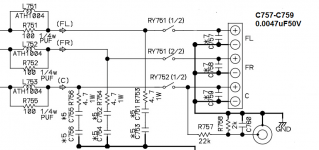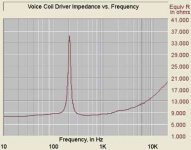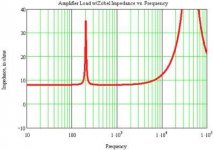A friend of ours who runs a small hotel has around 200 single malts... I think I've tested them all (though memory gets hazy...). Not found one I don't like though!
Lagavulin is my favourite of the Islay peaty malts. Lochnagar is good too, my favourite glugging ones are probably Glenmorangie, Balvenie, Highland Park.
I remember a visit to the Glenmorangie distillery where we were supping a selection of cask strength stuff, literally drawn with a big syringe from the cask in the bonded warehose, at 10 am.... The day got hazy after that.
Lagavulin is my favourite of the Islay peaty malts. Lochnagar is good too, my favourite glugging ones are probably Glenmorangie, Balvenie, Highland Park.
I remember a visit to the Glenmorangie distillery where we were supping a selection of cask strength stuff, literally drawn with a big syringe from the cask in the bonded warehose, at 10 am.... The day got hazy after that.
A friend of ours who runs a small hotel has around 200 single malts... I think I've tested them all (though memory gets hazy...). Not found one I don't like though!
Lagavulin is my favourite of the Islay peaty malts. Lochnagar is good too, my favourite glugging ones are probably Glenmorangie, Balvenie, Highland Park.
I remember a visit to the Glenmorangie distillery where we were supping a selection of cask strength stuff, literally drawn with a big syringe from the cask in the bonded warehose, at 10 am.... The day got hazy after that.
I can well imagine . . . 😀
Nobody thought of using Whisky as AA filter in digital photography?The day got hazy after that.
Attachments
I would bet my shirt that no one has! 🙂Nobody thought of using Whisky as AA filter in digital photography?
Attachments
Have you noticed that the exchanges are much more fun and friendly, here, when we do not cut silicon in four ?
Would this metal emit harmful radiations that attacks mood ?
I suggest we turn it into sand and make a pile of it ;-)
Would this metal emit harmful radiations that attacks mood ?
I suggest we turn it into sand and make a pile of it ;-)
See the name of the thread?
I thought this is John's place about all his things, but, strangely, it attracts all sorts of gatecrashers like $hit flies..
Based on subjects of posts John Curl's Blowtorch preamp is the last thing this thread is about. Now if "John's things" include his old Porsche 914 and Bybees then the percentage goes up a bit. 🙂
Why are you so obsessed with how others respond?Have you noticed that the exchanges are much more fun and friendly, here, when we do not cut silicon in four ?
Would this metal emit harmful radiations that attacks mood ?
I suggest we turn it into sand and make a pile of it ;-)
Even by just talking about it.Alcohol is a great leveller

Have you noticed that the exchanges are much more fun and friendly, here, when we do not cut silicon in four ?
Would this metal emit harmful radiations that attacks mood ?
I suggest we turn it into sand and make a pile of it ;-)
Where there's sand, salt isn't far away. 😉 I'm not a huge drinker but still find this a nice reprieve from the usual banalities (guilty as charged).
I'm proud to say that silicon was given its name in 1831 by Scottish chemist Thomas Thomson. 😎...when we do not cut silicon in four ?
Attachments
I cannot help but say:
The Maxwell equations are from a Scottish physicist.
The maths underneath are from Hamilton an Irish mathematician who had developed it before unaware it was going to find an application.
Maxwell equations use extensively the Nabla operator invented by Hamilton.
The Maxwell equations are from a Scottish physicist.
The maths underneath are from Hamilton an Irish mathematician who had developed it before unaware it was going to find an application.
Maxwell equations use extensively the Nabla operator invented by Hamilton.
Last edited:
I read that the Nabla (a.k.a. del) operator - symbol ∇ - is a vector differential operator. 
I claim no understanding of mutivariate calculus, but Maxwell obviously had no difficulty employing Hamilton's mathematics!

I claim no understanding of mutivariate calculus, but Maxwell obviously had no difficulty employing Hamilton's mathematics!
Thanks, but the 5th edition I have info here does not match the schematics below which have single Zobels downstream of the output inductor and upstream of the output relay, also there is large variation in the values for the output inductor damping resistor.The 6th edition of Douglas Self's book, Audio Power Amplifier Design, includes an entire chapter called "Output Networks and Load Effects", pp. 355-385. The science behind the component values in Zobel networks is discussed there.
It seems there is no real consensus on output load compensation network values nor network circuit location.
Anybody else have useful info or experience/test measurements ?.
CH 8 - Zobel Networks
All power amplifiers except for the most rudimentary kinds include a Zobel network in their arrangements for stability. This simple but somewhat enigmatic network comprises a resistor and capacitor in series from the amplifier output rail to ground. It is always fitted on the inside (i.e. upstream) of the output inductor, though a few designs have a second Zobel network after the output inductor; the thinking behind this latter approach is obscure. The resistor approximates to the expected load impedance, and is usually between 4.7 and 10 Ω . The capacitor is almost invariably 100 nF, and these convenient values and their constancy in the face of changing amplifier design might lead one to suppose that they are not critical; in fact experiment suggests that the real reason is that the traditional values are just about right.
The function of the Zobel network (sometimes also called a Boucherot cell) is rarely discussed, but is usually said to prevent too inductive a reactance being presented to the amplifi er output by a loudspeaker voice-coil, the implication being that this could cause HF instability. It is intuitively easy to see why a capacitive load on an amplifier with a finite output resistance could cause HF instability by introducing extra lagging phase shift into the global NFB loop, but it is less clear why an inductive load should be a problem; if a capacitive load reduces stability margins, then it seems reasonable that an inductive one would increase them.
At this point I felt some experiments were called for, and so I removed the standard 10 Ω /0.1 μF Zobel from a Blameless Class-B amplifi er with CFP output and the usual NFB factor of 32 dB at 20 kHz. With an 8 Ω resistive load the THD performance and stability were unchanged. However, when a 0.47 mH inductor was added in series, to roughly simulate a single-unit loudspeaker, there was evidence of local VHF instability in the output stage; there was certainly no Nyquist instability of the global NFB loop.
I also attempted to reduce the loading placed on the output by the Zobel network. However, increasing the series resistance to 22 Ω still gave some evidence of stability problems, and I was forced to the depressing conclusion that the standard values are just about right. In fact, with the standard 10 Ω /0.1 μF network the extra loading placed on the amplifi er at HF is not great; for a 1 V output at 10 kHz the Zobel network draws 6.3 mA, rising to 12.4 mA at 20 kHz, compared with 125 mA drawn at all frequencies by an 8 Ω resistor. These currents can be simply scaled up for realistic output levels, and this allows the Zobel resistor power rating to be determined. Thus an amplifi er capable of 20 V rms output must have a Zobel resistor capable of sustaining 248 mA rms at 20 kHz, dissipating 0.62 W; a 1 W component could be chosen.
In fact, the greatest stress is placed on the Zobel resistor by HF instability, as amplifier oscillation is often in the range 50 – 500 kHz. It should therefore be chosen to withstand this for at least a short time, as otherwise fault-finding becomes rather fraught; ratings in the range 3 – 5 W are usual.
To conclude this section, there seems no doubt that a Zobel network is required with any load that is even mildly inductive. The resistor can be of an ordinary wire-wound type, rated to 5 W or more; this should prevent its burn-out under HF instability. A wire-wound resistor may reduce the effectiveness of the Zobel at VHF, but seems to work well in practice; the Zobel still gives effective stabilization with inductive loads.

C751-C756 0.22uF/50V

Thanks Rayma,
IC Audio Power Amplifiers and Zobel Networks: One Size Does Not Fit All
This article discusses IC amplifier single FR driver application, the danger of overshoot voltages due to under compensation and shows graph of single driver Z/F using standard Rule Of Thumb zobel RC values.

VCD Z vs. Frequency (measured).

VCD Z w/Zobel network vs. Frequency "Rule of Thumb" Values (calculated).
So, FR drivers/boxes need RC compensation.... in past experiments I have found FR drivers to sound much cleaner/clearer with zobel compensation.
Typical two and three way loudspeaker impedance curves are of course different to single FR loudspeaker, anybody have measured Z curve values for standard/consumer 12dB/oct 2 way (say 8"/1") loudspeakers please ?.
IC Audio Power Amplifiers and Zobel Networks: One Size Does Not Fit All
This article discusses IC amplifier single FR driver application, the danger of overshoot voltages due to under compensation and shows graph of single driver Z/F using standard Rule Of Thumb zobel RC values.

VCD Z vs. Frequency (measured).

VCD Z w/Zobel network vs. Frequency "Rule of Thumb" Values (calculated).
So, FR drivers/boxes need RC compensation.... in past experiments I have found FR drivers to sound much cleaner/clearer with zobel compensation.
Typical two and three way loudspeaker impedance curves are of course different to single FR loudspeaker, anybody have measured Z curve values for standard/consumer 12dB/oct 2 way (say 8"/1") loudspeakers please ?.
A zobel for stability is not the same as a zobel for load compensation. The stabilizing zobel can be only as large as necessary to stabilize the amplifier. A zobel for the load however depends on the load impedance.
It makes sense to put the stabilizing zobel on the amp it goes with, and the speaker zobel on the speaker it goes with. I would not design the stabilizing zobel as if it were for compensating the speaker. You could do that of course, and then tweak the amp compensation to match, but that won't guarantee an optimal result and it will be tailored for one speaker.
It makes sense to put the stabilizing zobel on the amp it goes with, and the speaker zobel on the speaker it goes with. I would not design the stabilizing zobel as if it were for compensating the speaker. You could do that of course, and then tweak the amp compensation to match, but that won't guarantee an optimal result and it will be tailored for one speaker.
Last edited:
Thanks Richards it's always interesting to hear good music.
Youtube has me on a Marcus Miller playlist, great stuff.
Nabla is more that that, it stands for 3 operators depending of the nature of the operand. It is a neat trick that enables to write, memorize and manipulate differential equations encountered in several fields of physics.I read that the Nabla (a.k.a. del) operator - symbol ∇ - is a vector differential operator.
I claim no understanding of mutivariate calculus, but Maxwell obviously had no difficulty employing Hamilton's mathematics!
- Status
- Not open for further replies.
- Home
- Member Areas
- The Lounge
- John Curl's Blowtorch preamplifier part III



 Them black brothers groove.
Them black brothers groove.